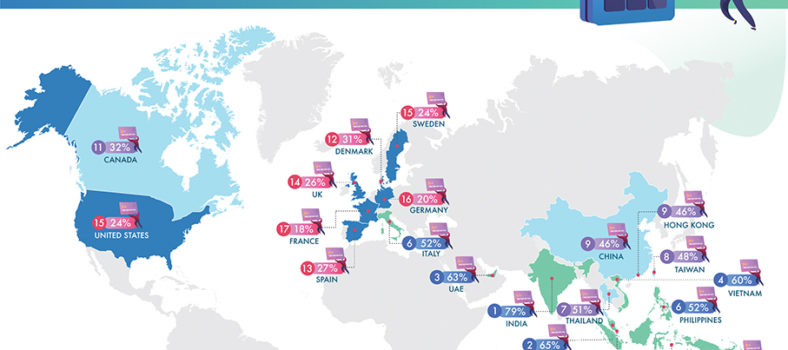 By Bob Dowd
By Bob Dowd
It is no surprise that the global payments industry accelerated substantially in 2020. As the pandemic birthed arguably one of the biggest digital revolutions to date, more and more businesses are realizing the importance of having a global payments partner.
Multiple factors have been the stimulus driving half a decade’s change in just a few months. Acceleration of digital adoption, preference for real-time payments, investment in AI and automation, and M&A’s have been the leading factors that pushed the industry to transform. However, the most prominent change can be attributed to developing customer preferences for speed and ease of use at competitive rates.
In addition, stronger demand for data security enhancement and fraud prevention by customers increased the momentum of innovation which forced new players to enter the market. Advances in technology such as SWIFT GPI, DLT and others have also been the key drivers in the rapid growth of the industry.
Our research shows that the payments industry’s total addressable market is $3.6 Trillion USD in core markets, with $245 Billion addressed by specialist players. The market has grown at 8 percent p.a. driven by specialists taking share from banks which gradually experienced decline due to COVID-19. However, the industry is expected to bounce back and return to pre-COVID rates between 2021 and 2025, which means that the next five years will be crucial for players in the global payments space. In order to secure their market share, specialist players will have to garner deeper understanding of market volatility and performance, primary customer preferences and the strategies they can implement to remain competitive.
The top five trends we predict that will influence the growth of the global payments industry in the coming years are as follows:
1. Evolving customer needs will set the benchmark
The provision for fast, seamless, and trackable payments will become table stakes rather than a differentiator for payments providers. For example, moneycorp online offers its customers the ability to not only make payments online in multiple currencies, but also store payment and recipient details, manage exchange rates, and track transactions all in one place. The function of making payments will become part of a broader value proposition, linked through API technology to other elements of business such as their ERP, CRM, and Accounting systems.
Customers will become more sophisticated in cash flow and risk management which will in turn impact how they manage their finances and choose their payments partner.
2. Enhancing technology to drive commoditization and reduced prices
Our research suggests that half of businesses have their FX provider’s system integrated into their ERP software. This is a clear indication that technology is adapting to meet increasing customer needs as the majority businesses prefer payments providers whose technology fits seamlessly into their existing business model.
Real time payments (RTP) are also gaining popularity and are becoming commercially viable in a number of regions. As per the latest FIS report, 54 countries now have active real-time payments programs, up from 40 in 2018 and nearly four times as many as in 2014.
Long term technology is likely to shift to alternative rails such as Distributed Ledger Technology. Payments providers will need to be able to function across alternative rails to ensure costs are optimized and service demands fulfilled. Increased efficiency will continue to drive down prices and enable reduction in service costs.
3. Intensifying competition for every element of the value chain
The ecosystem addressing cash flow management has proliferated in recent years. Today, full-service players have a competitive advantage as they provide SMEs a ‘one-stop shop’ for all their business needs. B2B disrupters are successfully carving out a new niche for themselves using an end-to-end value chain model that satisfies the customer’s need for customized solutions.
Increasing competition from fintech players is also making a significant impact on the industry as few global payments providers are now opting to onboard third-party payments solution providers as their partners, thereby further enhancing their value proposition. The payment gateway market was valued at USD 17.2 billion in 2019, and is expected to reach USD 42.9 billion by 2025. Convergence will be at the core of the transformation of the payments landscape, through 2021 and beyond.
4. Increasing cooperation between jurisdictions
Customer demands for an interconnected international payments landscape will flourish. However, the political challenges of doing so globally will make the ability of a global payments provider to offer their services in multiple geographic locations extremely important. We are witnessing common standards of this being implemented in pockets due to the complexities of international standards and regulations. However, we are seeing a rapid uptick in co-operation between international businesses and regulators alike.
5. Differentiators will become commonplace
Specialist players will maintain a significant hedge in the short term as they will continue to serve the underserved segments, such as SMEs, a faster, cheaper and secure payments platform. However, eventually this will become the norm and other sources of differentiation will be needed like niche corridors, industry specific integration, and liquidity management to set your services apart from the rest.
In a nutshell, the key strategic areas of focus for optimizing the value of business for all payments providers would be a combination of three vital elements — owning the customer relationship with specific client segments (e.g. SME’s), focusing on efficiency to drive down costs and constantly innovating to drive differentiation around products and services.
To create a new generation of payments providers, studying emerging trends is the most important innovation task. Those that cling to old ways will be left behind.
Bob Dowd, Chief Executive Officer of moneycorp Americas.




